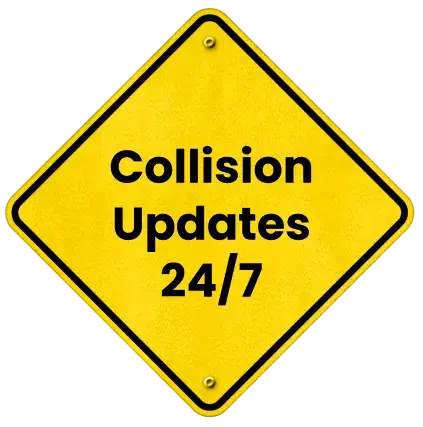
Drowsy Driving on the Plains: I-80 Fatigue-Related Crashes


 Interstate 80 stretches over 2,900 miles, connecting the East Coast to the West Coast. It runs through major cities and vast rural areas. Drivers often face long, unchanging scenery that makes the road feel endless. These conditions create a serious risk of fatigue.
Interstate 80 stretches over 2,900 miles, connecting the East Coast to the West Coast. It runs through major cities and vast rural areas. Drivers often face long, unchanging scenery that makes the road feel endless. These conditions create a serious risk of fatigue.
Fatigue reduces alertness and slows reaction times. A drowsy driver on I-80 may drift across lanes or miss sudden traffic changes. Many crashes happen simply because a driver failed to rest.
This article explains the risks of fatigue on I-80, the warning signs, smart rest-stop use, and liability in fatigue cases.
The Risks of Long Monotonous Rides
I-80 stretches across a mix of mountains, farmland, and desert, with certain sections, such as the long stretches in western Nebraska and Wyoming, feeling endless. Drivers often find themselves staring at the same flat horizon and straight pavement for hours. This kind of monotony can lull the mind into a drowsy state commonly called highway hypnosis.
When highway hypnosis sets in, drivers begin to function almost on autopilot. Their reaction times slow, and they lose awareness of what’s happening around them. On a busy interstate like I-80, just a few seconds of drifting attention can be enough to trigger a serious accident.
Crashes caused by fatigue are more common than many people realize. According to the National Highway Traffic Safety Administration, thousands of these accidents happen each year. Truck drivers are especially at risk because they spend days at a time traveling routes like I-80 to move goods across the country. The long hours and demanding schedules make fatigue a constant danger, not only for them but for everyone else on the road.
Warning Signs of Driver Fatigue
Fatigue rarely comes out of nowhere. It usually creeps up slowly, with the body giving plenty of warning signs that it’s time to rest.
Some of the most common signals include constant yawning, heavy eyelids, or difficulty keeping your vehicle in its lane. You might miss an exit or fail to notice road signs, and your mind may start drifting off in short bursts of lost focus.
One of the most dangerous effects of fatigue is something called a microsleep. These are brief, uncontrollable moments where the brain essentially “shuts down” for a few seconds. At highway speeds, just three or four seconds of microsleep means a car can travel the length of an entire football field with no one really in control.
Too often, drivers try to fight through these warning signs instead of pulling over to rest. But pushing past fatigue puts not only the tired driver at risk, but also everyone else on the road. In fact, if a crash happens because a driver ignored the signs of exhaustion, it may even be considered negligence.
Smart Use of Rest Stops Along I-80
I-80 is lined with dozens of rest stops, all designed with one goal in mind: to give drivers a safe place to take a break. Taking advantage of these stops can make a big difference in preventing fatigue-related accidents.
Safety experts suggest pulling over about every two hours or every 100 miles. Even a quick stop to stretch, walk around, and get some fresh air can bring back alertness. Staying hydrated and grabbing a light snack can also help keep drowsiness at bay.
Many rest areas along I-80 provide more than just a place to pause. Some have food options, fuel stations, and safe parking spots where truck drivers can log their mandatory rest periods. Regular drivers should also plan ahead and work these breaks into their trips.
By using rest stops, drivers take responsibility; by ignoring them, they invite questions of liability after a crash.
Liability in Fatigue-Related Accidents
Fatigue affects drivers much like alcohol does: it slows reaction times, clouds judgment, and makes coordination more difficult. Because of the danger it poses, both courts and insurance companies treat fatigue as a very real and serious risk on the road.
When a crash is caused by drowsy driving, the responsibility often falls on the fatigued driver. Investigators can rely on different types of evidence to show that a driver was too tired to be safe. This might include electronic logging devices in commercial trucks that record hours of service, witness statements from passengers or other motorists, video footage showing swerving or other erratic behavior, or cell phone and toll records that reveal long stretches of continuous driving without rest.
Sometimes, the blame doesn’t stop with the driver. Trucking companies face liability if they push drivers to ignore rest requirements or drive beyond legal limits. Records of unrealistic demands or ignored safety regulations can point to company negligence.
For victims of fatigue-related crashes, seeking compensation can provide critical support. Claims often include coverage for medical bills, lost income, pain and suffering, and long-term care needs. By holding tired drivers, and in some cases their employers as well, responsible, victims not only get the help they deserve but also contribute to safer roads by discouraging fatigue-related driving in the future.
Preventing Fatigue on I-80
The best way to avoid fatigue-related crashes is to prevent tiredness before it becomes a problem. A few simple habits can go a long way in helping drivers stay alert and safe on the road.
When traveling long distances, it helps to rotate drivers whenever possible. Sharing the responsibility gives each person a chance to rest and recover. It’s also smart to avoid driving late at night or in the early morning hours when the body naturally wants to sleep.
Getting a full night’s rest before setting out on a trip is one of the most important steps a driver can take. Starting a long drive already feeling tired is extremely risky. While caffeine from coffee or energy drinks can provide a short-term boost, it should never replace real, quality sleep.
Careful planning is the key to safe travel. Taking steps to prevent fatigue doesn’t just protect drivers and passengers, it also helps keep everyone else on I-80 safe. By preventing fatigue, drivers lower the chance of facing negligence claims after a crash.
Contact a Skilled I-80 Accident Lawyer
If you or someone you love has been injured in a fatigue-related crash on I-80, put your case in the hands of an experienced advocate. A seasoned I-80 car accident attorney can review your case, hold the liable parties accountable and fight for the compensation you deserve.
